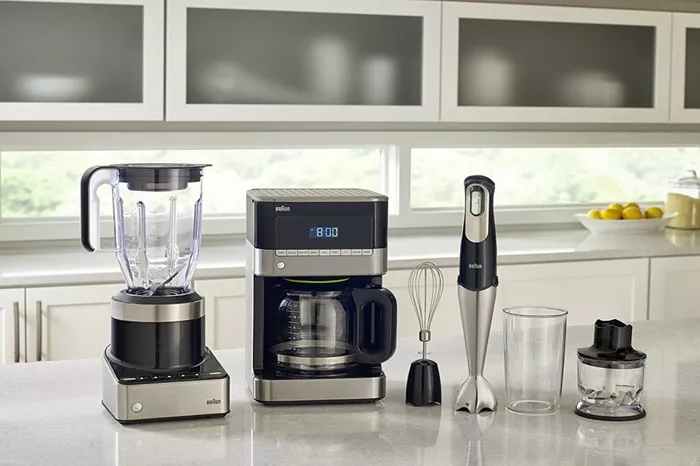Espresso machines are a staple in coffee shops and homes of serious coffee lovers. But many people wonder why they cost so much. The price of a high-quality espresso machine can range from hundreds to thousands of dollars. To understand why, we need to look at the materials, engineering, and craftsmanship that go into making them.
The Complexity of Espresso Extraction
Making espresso is not as simple as brewing regular coffee. Espresso requires high pressure, precise temperature control, and fine-tuned extraction. The machine must force hot water through tightly packed coffee grounds at around 9 bars of pressure. This process demands advanced engineering to maintain consistency.
Pressure Stability Matters
Cheaper machines often struggle to maintain stable pressure. Inconsistent pressure leads to uneven extraction, resulting in bitter or sour espresso. High-end machines use commercial-grade pumps and pressure regulators to ensure perfect extraction every time.
Temperature Control Is Critical
Espresso tastes best when brewed between 195°F and 205°F. Even a few degrees too hot or cold can ruin the flavor. Expensive machines have advanced thermoblocks or boilers with PID controllers to keep temperature stable. Cheaper models may overheat or cool down too quickly.
High-Quality Materials Increase Durability
Espresso machines deal with high pressure, heat, and water daily. To withstand these conditions, manufacturers use durable materials that don’t come cheap.
Stainless Steel & Brass Construction
Many premium machines have bodies made of stainless steel or brass. These metals resist corrosion and handle heat well. Plastic parts, common in cheaper machines, can warp or crack over time.
Precision-Made Components
The internal parts of an espresso machine must fit perfectly. Valves, gaskets, and seals must endure constant pressure without leaking. High-end brands use CNC machining for precision, while budget models may cut corners with lower-quality materials.
Advanced Features Justify the Cost
Beyond basic functionality, expensive espresso machines offer features that improve convenience and performance.
Dual Boilers for Efficiency
A dual-boiler system allows simultaneous brewing and steaming. This means no waiting between pulling a shot and frothing milk. Single-boiler machines require time to switch between functions, slowing down workflow.
Programmable Settings for Consistency
Professional machines often have customizable settings. Baristas can adjust brew time, temperature, and pre-infusion for different coffee beans. Home models with these features cost more but provide café-quality results.
Handcrafted vs. Mass-Produced Machines
Some espresso machines are still made by hand in small batches. Brands like La Marzocco and Slayer focus on craftsmanship, with technicians assembling each unit carefully. Mass-produced machines save costs but may lack the same attention to detail.
Labor & Expertise Add Value
Skilled workers test and calibrate high-end machines before shipping. This labor-intensive process increases the price but ensures reliability. Cheaper machines are often assembled quickly in factories with less oversight.
The Cost of Research & Development
Leading espresso machine manufacturers invest heavily in innovation. They test new technologies to improve extraction, energy efficiency, and user experience. These R&D costs contribute to the final price.
Patented Technologies
Some brands develop unique systems, like pressure profiling or smart pre-infusion. These patented features set them apart from competitors but also add to the expense.
Commercial vs. Home Machines
Commercial espresso machines are built to last years under heavy use. They have larger boilers, stronger pumps, and industrial-grade parts. While home models are smaller, high-end ones still borrow commercial technology, keeping prices high.
Certification & Safety Standards
Machines sold in different countries must meet strict safety regulations. Testing and certification add to production costs but ensure the machine won’t fail or pose risks.
Brand Reputation & Prestige
Well-known brands charge more because of their reputation. Companies like La Marzocco, Rocket, and Decent have loyal followings. Buyers pay extra for reliability, customer support, and resale value.
Limited Edition & Custom Designs
Some manufacturers offer special editions with unique finishes or collaborations with designers. These exclusive models often come with a premium price tag.
Maintenance & Long-Term Value
A cheap espresso machine might save money upfront but cost more in repairs. High-end machines are built to last decades with proper care. Many come with warranties and access to professional servicing.
Availability of Replacement Parts
Premium brands ensure spare parts are available for years. Cheap machines may become unusable if a single component breaks and can’t be replaced.
Conclusion
Espresso machines are expensive because of their complex engineering, high-quality materials, and advanced features. Cheaper models cut corners, leading to inconsistent performance and shorter lifespans. Investing in a well-made machine ensures better coffee, durability, and long-term savings.
Related topics:
Why Are Commercial Espresso Machines So Expensive?
Is Espresso Coffee the Same as Regular Coffee?
Best Nespresso Compatible Pods


